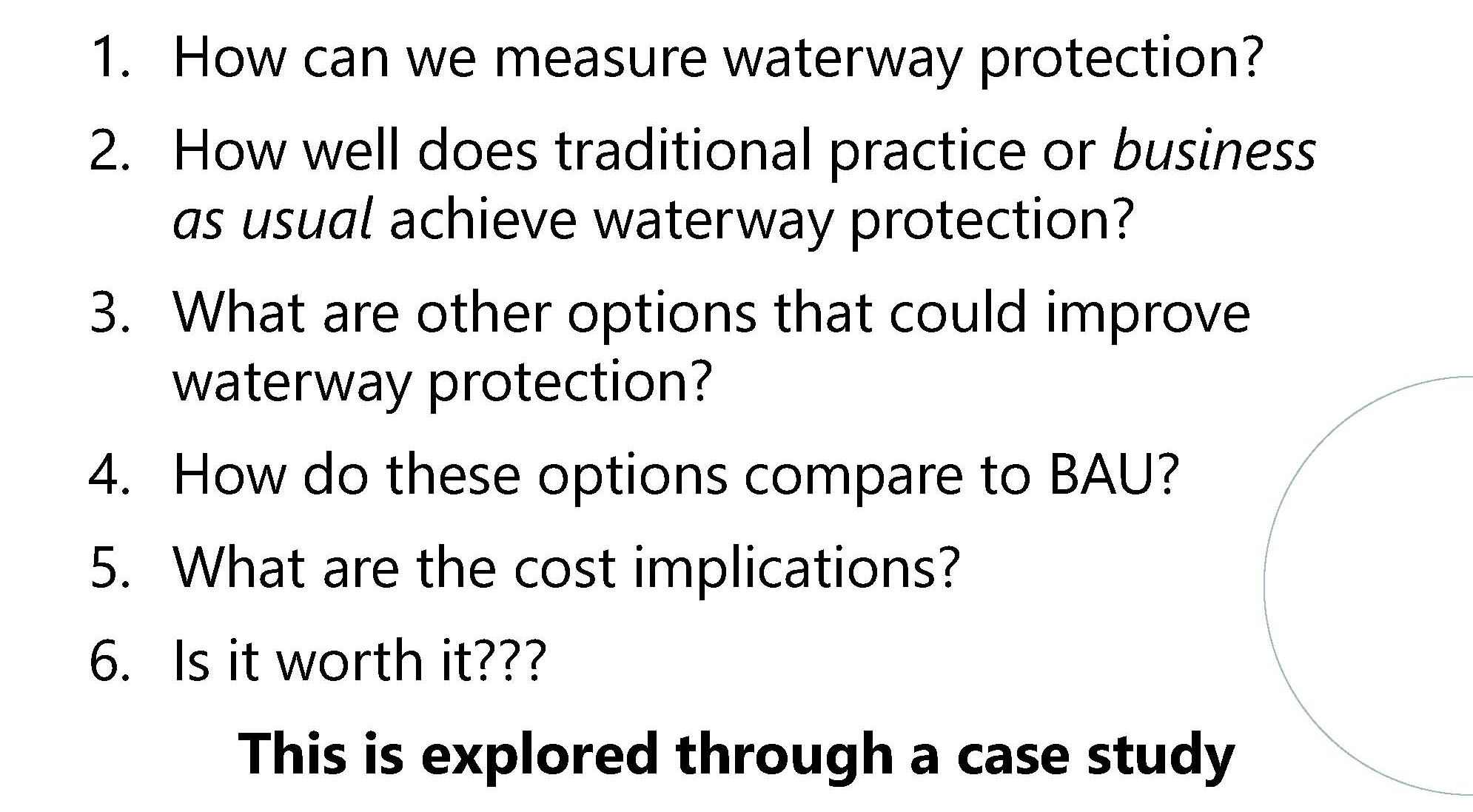Leading Change in Australia: "Why best practice is destroying our waterways," explains Rod Wiese
Note to Reader:
At the biannual conference held by Stormwater Australia, and titled Stormwater 2016: Rising to the Challenge, Rod Wiese presented a paper titled Why Best Practice is Destroying Our Waterways. Rod Wiese is a champion for “doing business differently” in Australia and is playing a prominent role in leading change. The abstract for his paper is reproduced below.
Framework for Analysis
“This study explores the genuine desire to protect and enhance urban waterways through whole of water cycle measures having wide ranging benefits to community health and climate change resilience,” wrote Rod Wiese.
“ Controls that recognise the value of enhancing the local waterways and imitating a more natural regime, namely recovery, re-use, infiltration and runoff control were investigated.”
Controls that recognise the value of enhancing the local waterways and imitating a more natural regime, namely recovery, re-use, infiltration and runoff control were investigated.”
“The options investigated were assessed against ‘Levels of Service’ (LoS) that represent the protection of local ecology, preservation of geomorphology and enhanced amenity for the community.”
“The LoS were achievement of a 60% stormwater volume reduction, representing moderate protection of waterways, and 90% volume reduction, being optimum protection.”
Base Cases & Overall Finding:
Three Base Cases were considered in the analysis:
- Business-as-Usual;
- introducing local stormwater harvesting; and
- regional stormwater harvesting capturing a large catchment.
“The study found that the base cases were inadequate in achieving these LoS,” continued Rod Wiese. “Therefore we optimised these options to demonstrate the requirements that would need to be implemented to achieve the targets.”
To Learn More:
Download Why Best Practice is Destroying Our Waterways to view a PDF copy of the 12MB PowerPoint presentation by Rod Wiese.
SCOPE OF PRESENTATION:
Comparison with Waterway Health Metrics
“The options were further tested against a range of Waterway Health Metrics to determine if the LoS truly represent ecological and geomorphological protection.”
“A range of options were investigated with the most effective distributed measures included porous roads, in combination with infiltration trenches along encumbered waterway zones. Alternative measures to these distributed systems were stormwater injection connections to the non-potable network.”
“The appropriateness of using the LoS were assessed against common waterway health metrics (low flow duration, Tqmean, R-B index, and creek mobilisation metrics). The post-development scenarios were required to reach the pre-development level to be considered achieving waterway protection.”
Summary of Findings:
“Only Base Case 3 met 60% LoS volume reduction. LoS can be achieved with major catchment changes (end-of line, road scale WSUD) plus porous roads.”
Base Case 2 also required permeable driveways for 90% LoS. Alternative to porous roads, stormwater injection was equally effective in achieving LoS. Porous roads were the most expensive option. This is likely due to the unavailability of technology in Australia.”
“Assessing the options further against creek protection indicated that 90% LoS generally achieved many of the pre-development levels for each of the health metrics but not all parameters were satisfied.”
Click on the image below to download a JPEG copy:
A Perspective on Key Outcomes
As summarized by Rod Wiese, the key outcomes of this study were:
- Large assets alone cannot achieve the LoS;
- The 90% volume reduction LoS generally achieves health metrics (specific to this case study catchment only and with some exceptions);
- Technological advancement in the industry should be encouraged to drive prices down;
- An alternative scenario, compared to porous roads, could be to extend local stormwater harvesting to allow injection of stormwater to supplement non-potable demands. This is likely to be a more cost effective option.
“The study also how waterway health metrics do not discriminate between options that protect the ‘whole’ creek. It is evident that ‘best practice’ falls dramatic short of effective waterway protection,” concluded Rod Wiese. “Clearly, we need to manage volume and restore water balance pathways as Kim Stephens explained in his keynote at Stormwater 2016 about the primacy of hydrology.”






